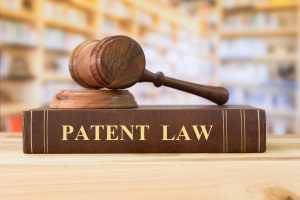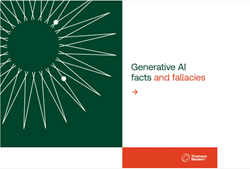 By now, you may have heard that the Supreme Court of the United States (SCOTUS) has agreed to hear a case involving the America Invents Act (“AIA”) and its definition of “prior art.” In other words, SCOTUS has agreed to decide whether sales made by patentee to third parties who are under contractual confidentiality restrictions with the patentee constitute “prior art” under the AIA. While this may seem ho-hum to some, the acceptance of this case by SCOTUS has many intellectual property practitioners on edge — SCOTUS’s dealings with patent law over the last 10 years have been an anything but routine, and this case may end up muddying the waters of their best laid patent plans.
By now, you may have heard that the Supreme Court of the United States (SCOTUS) has agreed to hear a case involving the America Invents Act (“AIA”) and its definition of “prior art.” In other words, SCOTUS has agreed to decide whether sales made by patentee to third parties who are under contractual confidentiality restrictions with the patentee constitute “prior art” under the AIA. While this may seem ho-hum to some, the acceptance of this case by SCOTUS has many intellectual property practitioners on edge — SCOTUS’s dealings with patent law over the last 10 years have been an anything but routine, and this case may end up muddying the waters of their best laid patent plans.
First, it will help to understand prior art pre-AIA. Before the AIA, inventors seeking patent rights in the U.S. proceeded under a “first-to-invent” doctrine, meaning in the simplest terms that that the first to conceive of the invention at issue and reduce same to practice was considered the “first inventor” and therefore entitled to full protection of the invention under U.S. patent law. Unfortunately, this doctrine remained at odds with pretty much the rest of the world, which operates under a “first to file” system. This means exactly what it states — that the patent for a given invention is awarded to the first inventor to file a patent application for such invention, regardless of the date of the invention. The AIA changed all that (and more), so the United States has been a first to file jurisdiction ever since March of 2013.
It also helps to understand the treatment of prior art in the United States before the AIA. At its core, prior art refers to evidence that demonstrated that the invention at issue is already known. Before the enactment of the AIA, 35 U.S.C. Section 102(s) specifically stated that “[a] person shall be entitled to a patent unless (a) the invention was known or used by others in this country, or patented or described in a printed publication in this or a foreign country, before the invention thereof by the applicant for a patent” (emphasis added). The AIA changed all that under AIA §§ 102(a)(1) and (2). For the purposes of this article, we will focus on Section 102(a)(1), which states that “[a] person shall be entitled to a patent unless (1) the claimed invention was patented, described in a printed publication, or in public use, on sale, or otherwise available to the public before the effective filing date of the claims invention….” (emphasis added). As a result, the AIA expanded the reach of prior art in many respects under Section 102(a)(1).

Generative AI Facts And Fallacies
Four insights and misunderstandings to help demystify GenAI for legal professionals.
So why the commotion? In short, it’s the added language “otherwise available to the public” and “secret sales” (i.e., where an embodiment of the invention was commercialized in a product, but the invention was not otherwise disclosed). This issue was raised in Helsinn Healthcare S.A. v. Teva Pharmaceuticals USA, Inc. et al., 855 F. 3d 1356 (Fed. Cir. 2017), req. for rehearing denied, Helsinn Healthcare S.A. v. Teva Pharmaceuticals USA, Inc., Teva Pharmaceutical Industries, Ltd., Case 2016-1284, 2016-1787 (Fed. Cir. 2018). In Helsinn Healthcare, the plaintiff is a small Swiss company that markets an intravenous formulation of the drug, palonsetron, for the treatment of chemotherapy-induced nausea and vomiting. The defendant, Teva Pharmaceuticals, filed an abbreviated new drug application with the FDA for the generic version of the drug in the U.S. (claiming the Helsinn Healthcare patents for an intravenous formulation of that drug are invalid). Helsinn Healthcare filed suit for patent infringement under four of its patents, one of which was subject to the new AIA law. Almost two years before filing patent applications, however, Helsinn Healthcare contracted with MGI Pharma in the US to under a license agreement as well as a supply and purchase agreement to distribute its yet-to-be-formulated version, subject to strict confidentiality provisions regarding the invention (a common practice in such agreements). And therein lies the rub — redacted versions of these agreements were filed by MGI Pharma in its Form-K filings with the SEC, but no confidential information regarding the formulations was publicly disclosed.
Is this “prior art”? Well, the Court of Appeals for the Federal Circuit (CAFC) sure thinks so. Although it agreed with the district court that there was a sale for the purposes of pre-AIA §102(b) analysis, the CAFC did not believe that the AIA changed the meaning of the term “on sale,” relying on pre-AIA interpretation of the term “on sale,” given a lack of congressional intent for the AIA to overrule prior caselaw regarding the on-sale bar, and notwithstanding the addition of the “or otherwise available to the public” clause. Helsinn Healthcare was left with no choice but to petition for certiorari to the SCOTUS. The problem: SCOTUS normally doesn’t hear cases it simply wants to affirm.
Among the litany of legislative intent regarding the AIA, one of the factors at issue was to limit prior art based upon objective criteria and references that were publicly available. In fact, since the enactment of the AIA, the USPTO’s own patent Examination Guidelines for implementing the AIA took the position that such “secret sale or use activity” did not constitute prior art (construing “[r]esidual clauses such as ‘’or otherwise’’ or ‘or other’… as modifying the preceding phrase or phrases” and thereby rendering “the ‘or otherwise available to the public’ residual clause of the AIA’s 35 U.S.C.102(a)(1) as indicating that secret sale or use activity does not qualify as prior art.”). That said, commercial offers for sale have been interpreted as on-sale bars to patentability in the U.S. long before the AIA, and the CAFC seems to have taken the same approach in finding that the claimed invention was subject to an invalidating public contract for sale (the “prior art”), even though the claimed invention was not disclosed to the public.
It has been common practice in the United States to enter into confidentiality agreements with third parties where disclosure of any part of an invention is required. In this case, the nature of the agreements (as well as the public disclosure of their existence) is problematic, if not apparently fatal, to the patents at issue (more on that point in the future). Oddly, my issue here is how SCOTUS will address the issue, and that is anything but certain. Believe me, I have only scratched the surface here for the purposes of outlining the issue presented by the Helsinn Healthcare case, but the point is clear — the AIA “prior art” waters are murky enough. Let’s just hope that SCOTUS does not muddy it up further.

Why Better Billing Statements Can Improve Your Firm’s Finances—And Your Client Relationships
Outdated billing is costing law firms money. Discover how clear, modern billing practices boost profits, trust, and cash flow in 2025.
 Tom Kulik is an Intellectual Property & Information Technology Partner at the Dallas-based law firm of Scheef & Stone, LLP. In private practice for over 20 years, Tom is a sought-after technology lawyer who uses his industry experience as a former computer systems engineer to creatively counsel and help his clients navigate the complexities of law and technology in their business. News outlets reach out to Tom for his insight, and he has been quoted by national media organizations. Get in touch with Tom on Twitter (@LegalIntangibls) or Facebook (www.facebook.com/technologylawyer), or contact him directly at [email protected].
Tom Kulik is an Intellectual Property & Information Technology Partner at the Dallas-based law firm of Scheef & Stone, LLP. In private practice for over 20 years, Tom is a sought-after technology lawyer who uses his industry experience as a former computer systems engineer to creatively counsel and help his clients navigate the complexities of law and technology in their business. News outlets reach out to Tom for his insight, and he has been quoted by national media organizations. Get in touch with Tom on Twitter (@LegalIntangibls) or Facebook (www.facebook.com/technologylawyer), or contact him directly at [email protected].